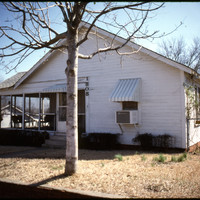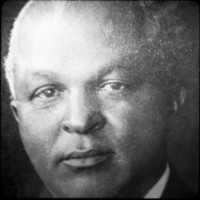Freedmen Communities in Texas | Bear Creek │ Deep Ellum │ Fourth Ward │ Gainesville │ Garden of Eden │ Grant’s Colony │ Kendleton │ Mosier Valley │ Mudville │ New Town │ Quakertown │ Tamina
New Town, Marshall (Harrison County)
Located in the city of Marshall, Texas, the African American Community of New Town resided in the western side of the city and was within the bounds of the West Houston, West End, Southwestern, Sylvester, West Meredith, Roseborough Springs, West Emory, and South Grove roads and/or boulevards. One of four distinct African American communities located within the city, New Town, developed around Wiley College beginning in the year 1910.
There is no concrete idea of how the community of New Town came into existence; however, there are several theories that currently exist. It may have been settled directly after the conclusion of the Civil War by recently freed slaves that sought to create an independent community on the boundaries of Marshall. A second theory contends that the community came into being when the Historic Black College Wiley University (later named Wiley College) moved to a new location in the neighborhood.
Education played a key role in the New Town with numerous educational facilities existing within the boundaries of the community. Established in 1873, Wiley College (previously Wiley University), Wiley remains the oldest accredited African American college west of the Mississippi River. Further, there was a private Catholic school called Holy Spirt Catholic School. There was also an African American Elementary school called New Town Elementary school simply called New Town Elementary school founded in 1912.
Residents of New Town were routinely middle- and upper-class, often occupying bungalow-style homes with an ownership figure above seventy percent within the community. Additionally, numerous businesses existed within the community including: grocery stores, restaurants, florists, dry cleaners, medical offices, and funeral homes. Two health clinics also existed within the community, Dr. G. T. Coleman’s Community Clinic and University Medical Arts Clinic, which catered to residents. In addition to the businesses within the community several prominent residents lived within its bounds. Further, the Sheppard Watts Hospital, found in 1925, lay within the boundaries of the community. Dr. M. W. Dogan, President of Wiley University, Professor James L. Farmer, the first African American to earn a PhD in Texas, and James L. Farmer Jr., who founded the Congress of Racial Equality in 1942 all resided within the community.
Augmenting the vibrant economic and educational aspects of New Town, numerous churches and fraternal societies that severed as the heart of the community exited within its boundaries. The oldest church within the community was the Ebenezer United Methodist Church. Founded in 1867, prominent community members such as: M. W. Dogan, James Farmer Sr., and Mitchell Kendall, who was a member of the Texas State Legislature during Reconstruction, attended the church. Founded in 1872, the Miles Memorial Colored Methodist Episcopal (CME) Church is the oldest CME church in Texas also resided within the community. Besides the numerous churches within the community, the Women’s Federation Club had a chapter in the community as well.
In recent times a concentrated effort by the Texas State Historical Commission has focused on preserving the district with a focus on finding more information out about the community. Focusing on community pride and preservation of the neighborhood, the organization created a concise action plan to achieve their goals. The community still exits, along with many of the churches and businesses created during the early 1900s, and residents in partnership with the state have started a long overdue effort to preserve the historically significant community.
Citations:
“New Town Neighborhood of Marshall: Historic Preservation Action Plan.” Texas Historical Commission, 2004;“Marshall New Town Historical Tour.” Marshall Historical Landmark Preservation Board, 2013.

